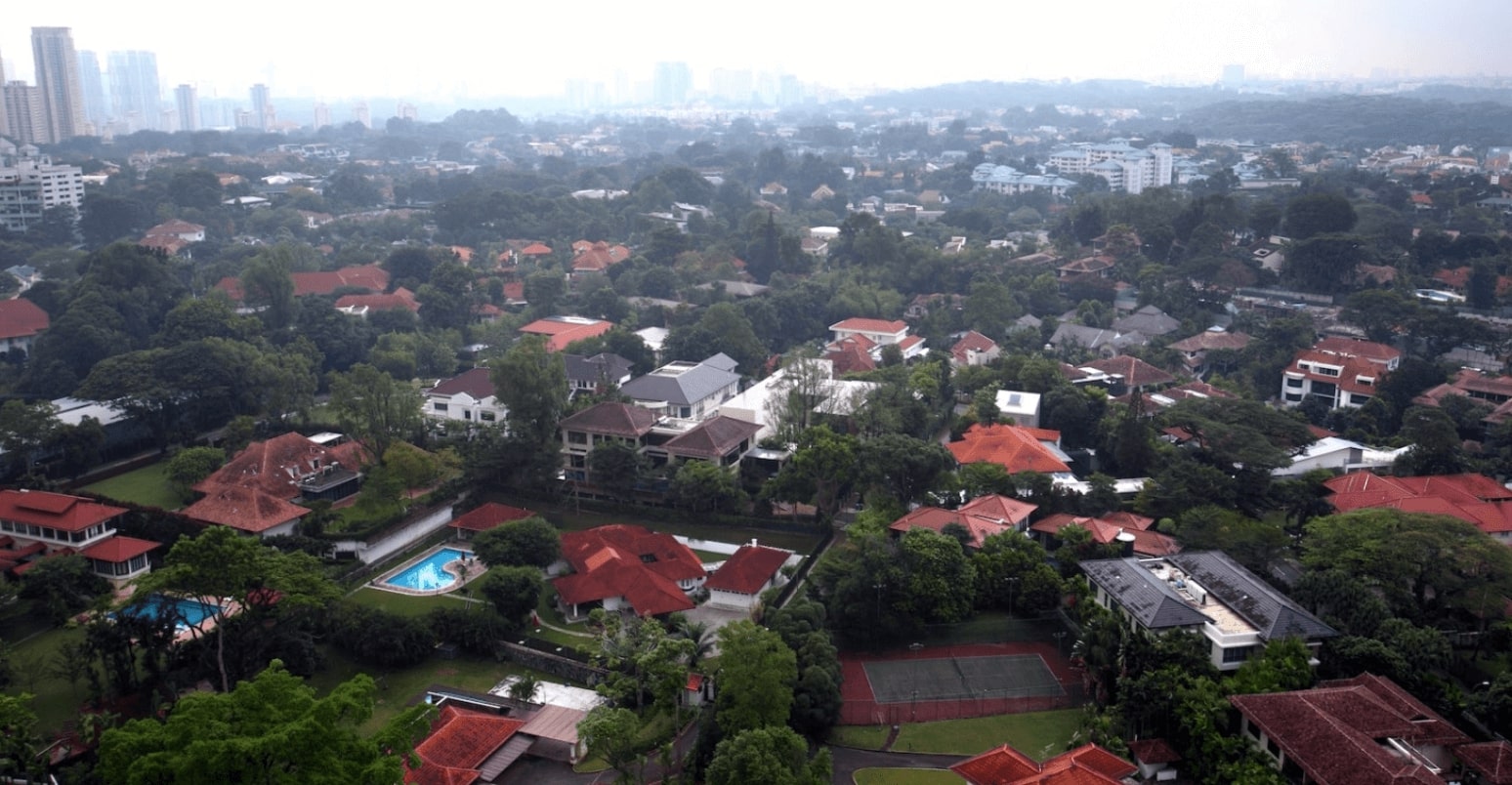In the recent Land Betterment Charge (LBC) review, the Urban Redevelopment Authority (URA) and Singapore Land Authority (SLA) introduced changes that have significant implications for property owners and developers. The review is conducted biannually to reflect current market conditions. This round saw contrasting outcomes for landed and non-landed residential properties.
Increase in LBC for Landed Residential Properties

LBC rates for landed residential properties have seen an average increase of 2.8%. This rise is largely driven by sustained demand in the Good Class Bungalow (GCB) segment. GCBs, known for their exclusivity and large land sizes, continue to attract high-net-worth individuals despite broader market volatility.
The increase in LBC rates for landed properties signals that these premium homes remain a lucrative market, with continued interest from both local and international buyers. Strong demand in prime districts such as 10 (Tanglin and Holland), 11 (Bukit Timah), and 21 (Upper Bukit Timah) has kept landed properties resilient. These areas witnessed some of the highest adjustments in LBC rates, emphasizing their desirability among affluent buyers.
With the rise in LBC rates, homeowners and developers must factor these additional costs into their development and investment plans. However, the long-term stability and prestige of landed properties are likely to ensure that demand remains steady, especially for those looking for unique, high-value investments.
Decrease in LBC for Non-Landed Residential Properties
In contrast, the non-landed residential property segment saw an average decrease of 5.4% in LBC rates. This drop reflects the cooling measures that have been implemented in recent years to moderate the housing market. Rising interest rates and cautious sentiment among developers have contributed to this trend.
The decline in non-landed LBC rates can be attributed to the effects of higher borrowing costs, as well as increased regulatory measures aimed at controlling speculative activity. With the cost of financing development projects rising, some developers have become more conservative in their land acquisition strategies, focusing on managing risks in the face of uncertain economic conditions.
Developers are also likely responding to the government’s cooling measures, which were introduced to ensure sustainable growth in the housing market. These measures, coupled with global economic uncertainties, have tempered some of the enthusiasm for non-landed residential projects, particularly in high-density urban areas.
However, while the reduction in LBC rates might make land acquisition more attractive in the short term, the overall sentiment in the market remains cautious. Buyers are more selective, and developers are taking a more measured approach to project launches, especially in the face of heightened competition and tighter financing conditions.
Non-Residential Sectors Experience Modest Changes
Outside the residential property market, LBC rates for non-residential sectors saw modest adjustments. Some sectors experienced slight increases, while others remained stable. The overall impact on commercial and industrial properties has been less pronounced, with the focus largely remaining on residential developments due to their dominant role in the property landscape.
Implications for Property Developers and Investors
The latest LBC review underscores the need for developers and investors to stay attuned to market dynamics and regulatory shifts. While landed properties continue to be viewed as a solid long-term investment, the reduction in non-landed residential LBC rates presents opportunities for developers looking to capitalize on lower costs.
However, caution is still the prevailing sentiment in the non-landed segment. As the market adjusts to both rising interest rates and evolving government policies, developers may find that careful planning and strategic site selection will be critical to success in the current environment.
Additionally, with the continued upward trajectory in LBC rates for landed properties, homeowners and developers looking to upgrade or develop landed estates should be prepared for increased land acquisition costs. However, given the resilience of demand in this sector, the investment potential remains high, particularly in premium districts.
Conclusion
The contrasting movements in LBC rates for landed and non-landed residential properties reflect the evolving nature of Singapore’s real estate market. Landed properties continue to command strong demand, particularly among wealthy buyers, while the non-landed segment is adjusting to a more cautious outlook amid rising interest rates and cooling measures.
For developers and investors, staying informed about these shifts is crucial for making sound, long-term decisions in an increasingly complex market.




